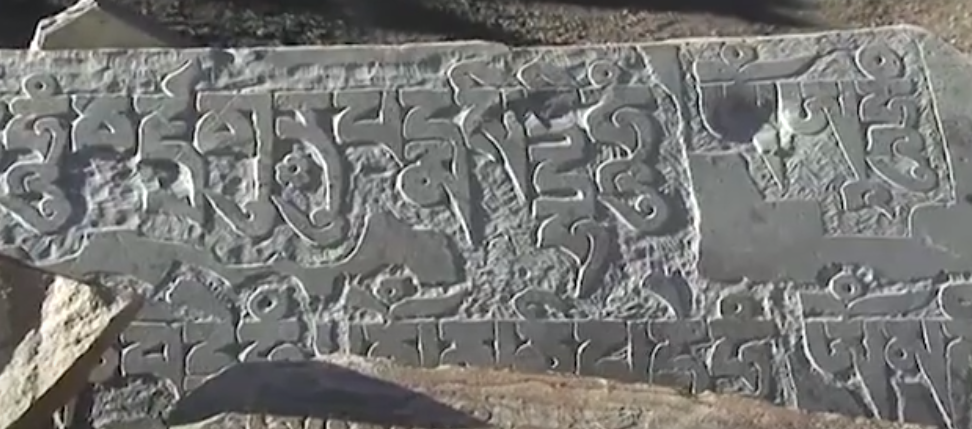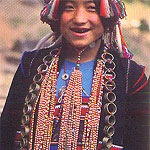High-quality silver work is done in Rajasthan. The products made are spice boxes, rose-water sprinklers, caskets and hukkas, all elaborately ornamented with bird and animal figures. Highly-carved silver furniture, like bed-legs, divan-legs, and swings with links having bird designs, is also found here.
Etching on metal is found in temple decorations like the chauki which is the platform on which the deity is placed. This has a decorative screen with traceries behind it and the chatra, a plate edged with floral carvings, is hung with strings as the covering for the image. Kalsha is another ornamented decoration kept in the corners of the chauki or on the palanquin. The other items which are highly carved are crowns, canopies, umbrellas, and seats.
Chasing, a technique where light-impression designs are done on the metal surface is practised widely in Rajasthan. In this technique a blunt chisel is used and only trace imprints of the design are done on the metal surface. This artwork is said to be a variation of bidri, and is done on plain or gilded brass and copper vessels where the floral ornamentation in relief is created by chasing or punching away the background around the relief work. The chased areas are filled with black lac which is fused to the surface. The floral designs glitter against a black background. This form of work is locally called marori. When the pattern is black and the background is in copper or brass, then the work is called chrakwan. In Jaipur, both forms are practised and the lac used is in a variety of colours. Jaipur, Jodhpur, and Udaipur are the main centres.
Jaipur is also known for its engraved, lacquered or enamelled brassware, which is mainly used for decorative purposes. Jodhpur is the main centre for handcrafted iron. It is also known for its aluminium shields and trophies. Koftagiri is found mainly in Jaipur, Ajmer, and Pushkar and is practised by very few artisans. This is the technique where light-coloured metal is inlaid on a darker surface. It was used originally for weapons and arms. A lac surface is fixed on the metal (usually iron) and after drawing the design with a chisel it is inlaid with gold and silver threads. The metal surface gets a blue-black gloss after the application of a mixture of lime juice and sand mixture.
Brassware which is chased, engraved, enamelled, lacquered, and encrusted is a speciality of Jaipur. A wide range of items, including vases, perforated lamps, table tops, fruit bowls, planters, jewellery boxes, and picture frames can be found. These are embellished with engraved motifs like flowers, landscapes, jungle scenes, and geometrical patterns. The engraving is done in three styles: chikan, a motif of bold flower decoration which stands out against the chased and lacquered surface; marori, minute lacquered patterns covering the entire surface; and bidri, minute leaves and flowers in an all-over design on a chased and lacquered surface.
Ink wells, pen cases, styluses, compasses, and holders are the outstanding brass, iron, or silver items found in Rajasthan. The ink wells are in simple circular, square, or octagonal shapes, while the small opening at the top is often more ornate. This metal ware is mainly found in the towns of Udaipur, Jodhpur, and Ajmer, and even in smaller places like Banswara, Dungarpur, and Pratapgarh.
The cire- perdue or lost wax process of metal-casting is used widely to make rural deities and votive objects. Icons of gods like Ganesha and Hanuman are made. Brass objects also include incense burners with perforated leaves, and handles in the shape of snakes, parrots, peacocks, or lotus stalks. Swings are a popular item of household furniture in Rajasthan — the chains are made of brass. Containers for betel leaf, and areca nut and catechu, all popular items of consumption, are also made. Lime containers are made in brass and take the shape of coconuts, mangoes, melons, or the lotus. Boxes for betel leaves are perforated to allow the air to circulate and to keep the contents fresh. Hookah bases and chillums ( pipes of plain brass, copper, or silver) are made in beautiful shapes with damascening or enamel work. Metal combs with simple and elegant designs are found all over Rajasthan. Kajaldans of brass are made along with slender bottles for kohl which have mirrors attached to them. Kankavatis or containers for the red pigment used to mark the forehead are made in many interesting forms. Foot scrubbers are made with great imagination and often have metal bells sealed inside the hollow space, thus creating a rhythmic sound. The handles of the scrubbers are shaped like birds, animals, humans. Well moulded brass toys like chariots, cannons, elephants, horses, and camels are made in Jodhpur.
From the sixteenth century onwards, bronzes representing Hindu deities, equestrian figurines, dipa lakshmis, and animal figurines mounted on wheels, have been cast. There are no exaggerations, distortions, or stylisations. The human figure is highly simplified and the head is much larger than the rest of the body. Single figures are common and the accent is on primary shapes. A thin flat strip of metal forms the base. Jain bronze figures continue to be made by the cire-perdue process in different parts of Rajasthan. Jewellery boxes, grain measures, scales, lotas, spouted pots, and a variety of kitchen utensils in copper, brass, and bronze show a remarkable combination of beauty and practicality.
Gallery
YOUR VIEWS
PRACTITIONERS: INDIA
Access 70,000+ practitioners in 2500+ crafts across India.
BIBLIOGRAPHY
10,000+ listings on arts, crafts, design, heritage, culture etc.
GLOSSARY
Rich and often unfamiliar vocabulary of crafts and textiles.
SHOP at India InCH
Needs to be written.






